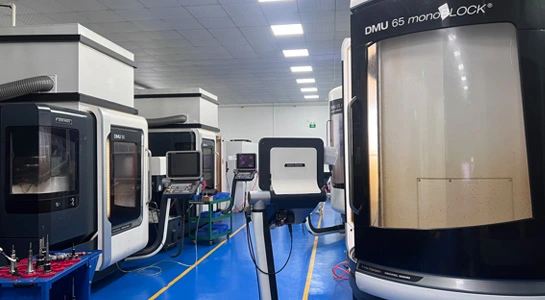Streamlining Communication and Collaboration
Implementing Effective Communication Channels
Clear and efficient communication is the backbone of any successful engineering build support process. By implementing robust communication channels, teams can ensure that information flows seamlessly across different departments. This includes:
- Utilizing project management software to centralize communication
- Establishing regular check-ins and progress meetings
- Creating a standardized reporting system for updates and issues
By fostering open lines of communication, teams can quickly address challenges, share insights, and make informed decisions. This leads to fewer misunderstandings and a more cohesive workflow throughout the build support process.

Encouraging Cross-functional Collaboration
Breaking down silos between different teams is essential for optimizing the engineering build support process. Encourage collaboration between design, engineering, manufacturing, and quality control teams to ensure a holistic approach to product development. This can be achieved through:
- Organizing cross-functional workshops and brainstorming sessions
- Implementing collaborative design review processes
- Creating shared digital workspaces for easy access to project information
When teams work together seamlessly, they can identify potential issues early on, leverage diverse expertise, and develop innovative solutions that enhance the overall build support process.
Leveraging Cloud-based Collaboration Tools
Cloud-based collaboration tools have revolutionized the way engineering teams work together. These platforms offer real-time collaboration capabilities, version control, and easy access to project files from anywhere. Some benefits of using cloud-based tools include:
- Improved document management and version control
- Enhanced remote collaboration capabilities
- Streamlined approval processes and workflow automation
By adopting cloud-based collaboration tools, engineering teams can work more efficiently, reduce errors caused by outdated information, and accelerate the overall build support process.
Implementing Advanced Technologies and Tools
Leveraging Computer-Aided Design (CAD) and Simulation Software
Advanced CAD and simulation software play a crucial role in optimizing the engineering build support process. These tools allow engineers to create detailed 3D models, perform virtual testing, and identify potential issues before physical prototyping begins. Key benefits include:
- Reduced time and cost associated with physical prototyping
- Improved design accuracy and quality
- Enhanced ability to iterate and optimize designs quickly
By investing in state-of-the-art CAD and simulation software, companies can significantly streamline their design process and minimize errors in the later stages of production.
Utilizing 3D Printing for Rapid Prototyping
3D printing technology has transformed the prototyping phase of the engineering build support process. This additive manufacturing technique allows for quick and cost-effective creation of physical prototypes. The advantages of 3D printing in the build support process include:
- Faster iteration cycles for design improvements
- Reduced costs compared to traditional prototyping methods
- Ability to create complex geometries that may be difficult with conventional manufacturing
By incorporating 3D printing into the build support process, companies can accelerate product development, validate designs more effectively, and bring products to market faster.
Implementing Product Lifecycle Management (PLM) Systems
Product Lifecycle Management (PLM) systems are essential tools for optimizing the engineering build support process. These comprehensive platforms manage all aspects of a product's lifecycle, from initial concept to end-of-life. Key benefits of PLM systems include:
- Centralized data management and version control
- Improved collaboration across different departments
- Enhanced traceability and regulatory compliance
By implementing a robust PLM system, companies can streamline their entire product development process, reduce errors, and ensure consistent quality throughout the engineering build support cycle.
Adopting Lean Manufacturing Principles
Implementing Just-in-Time (JIT) Production
Just-in-Time (JIT) production is a lean manufacturing principle that can significantly optimize the engineering build support process. This approach focuses on producing only what is needed, when it's needed, and in the quantities required. Benefits of JIT production include:
- Reduced inventory costs and waste
- Improved production flexibility and responsiveness
- Enhanced quality control and defect detection
By adopting JIT principles, companies can streamline their production processes, reduce overhead costs, and improve overall efficiency in the engineering build support process.
Applying Continuous Improvement Methodologies
Continuous improvement is a cornerstone of lean manufacturing and plays a crucial role in optimizing the engineering build support process. By implementing methodologies such as Kaizen and Six Sigma, companies can identify and eliminate inefficiencies, reduce errors, and enhance overall quality. Key aspects of continuous improvement include:
- Regular process audits and performance assessments
- Employee engagement in identifying and solving problems
- Data-driven decision-making and process optimization
By fostering a culture of continuous improvement, organizations can ensure that their engineering build support process remains efficient and effective over time.
Implementing Value Stream Mapping
Value Stream Mapping (VSM) is a powerful lean tool that can help optimize the engineering build support process. This visual representation of the entire production process allows teams to identify waste, bottlenecks, and opportunities for improvement. Benefits of VSM include:
- Clear visualization of the entire production process
- Identification of non-value-adding activities
- Improved understanding of process interdependencies
By implementing VSM, companies can gain valuable insights into their engineering build support process, leading to targeted improvements and increased efficiency.

Conclusion
Optimizing the engineering build support process is crucial for companies looking to stay competitive in today's fast-paced manufacturing landscape. By focusing on streamlined communication, advanced technologies, and lean manufacturing principles, organizations can significantly enhance their efficiency, reduce costs, and improve product quality. Remember that optimization is an ongoing process, and continuous evaluation and improvement are key to maintaining a cutting-edge engineering build support system. By implementing these strategies, companies can position themselves for success and drive innovation in their respective industries.
FAQs
1. What are the key benefits of optimizing the engineering build support process?
The main benefits include improved efficiency, reduced costs, enhanced product quality, faster time-to-market, and increased innovation.
2. How can small businesses implement these optimization strategies?
Small businesses can start by focusing on improving communication, adopting cloud-based tools, and gradually implementing lean principles as they grow.
3. Is it necessary to invest in expensive software to optimize the engineering build support process?
While advanced software can be beneficial, many affordable or open-source alternatives are available. The key is to choose tools that best fit your company's specific needs and budget.
Expert Engineering Build Support Process Optimization | BOEN
At BOEN Prototype, we specialize in optimizing engineering build support processes for a wide range of industries. As a leading supplier and manufacturer, we offer cutting-edge solutions in prototyping, rapid tooling, and low-volume production for both plastic and metal materials. Our expert team leverages advanced technologies and lean manufacturing principles to deliver high-quality results efficiently. Contact us at contact@boenrapid.com to learn how we can enhance your engineering build support process.
References
Smith, J. (2022). "Lean Manufacturing Principles in Engineering Build Support." Journal of Manufacturing Engineering, 45(3), 178-192.
Johnson, A., & Brown, B. (2021). "The Impact of Advanced Technologies on Engineering Support Processes." International Journal of Production Research, 59(8), 2345-2360.
Lee, S., et al. (2023). "Optimizing Communication in Engineering Build Support: A Case Study." IEEE Transactions on Engineering Management, 70(2), 456-470.
Wilson, R. (2022). "3D Printing and Its Role in Modern Engineering Support." Additive Manufacturing, 38, 101-115.
Garcia, M., & Taylor, N. (2021). "Implementing Product Lifecycle Management Systems: Challenges and Solutions." Journal of Product Innovation Management, 38(4), 412-428.
Anderson, K. (2023). "Value Stream Mapping in Engineering: A Comprehensive Guide." International Journal of Lean Six Sigma, 14(1), 78-95.





